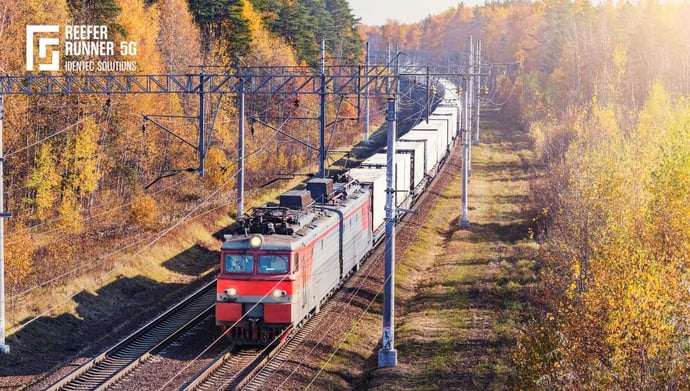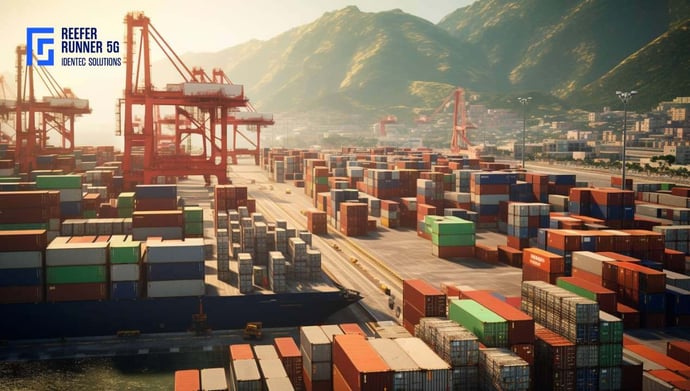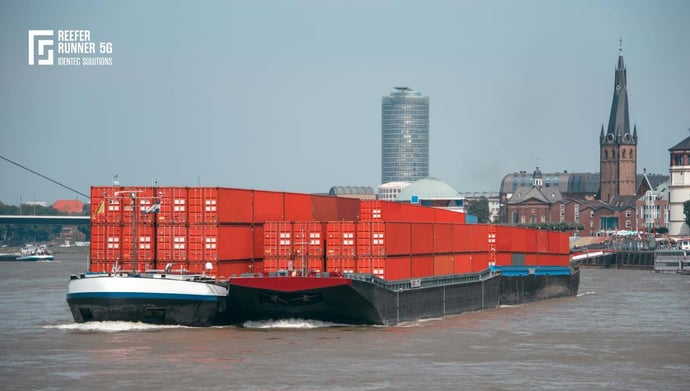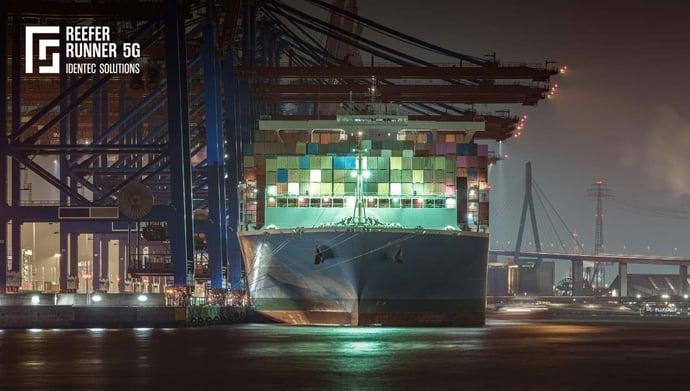Temperature sensitive: Taking care of hazardous goods in Container Terminals
| Written by Mark Buzinkay
Container terminals are often used to store many different types of hazardous goods, ranging from flammable liquids to toxic and corrosive substances. As such, these container terminals must have the right measures in place to ensure the safe storage of hazardous goods.
In this article, we’ll explain what hazardous goods are and why temperature control is essential. We’ll also look at how container terminals can use Reefer Runner to monitor, control and protect their temperature-sensitive cargoes.
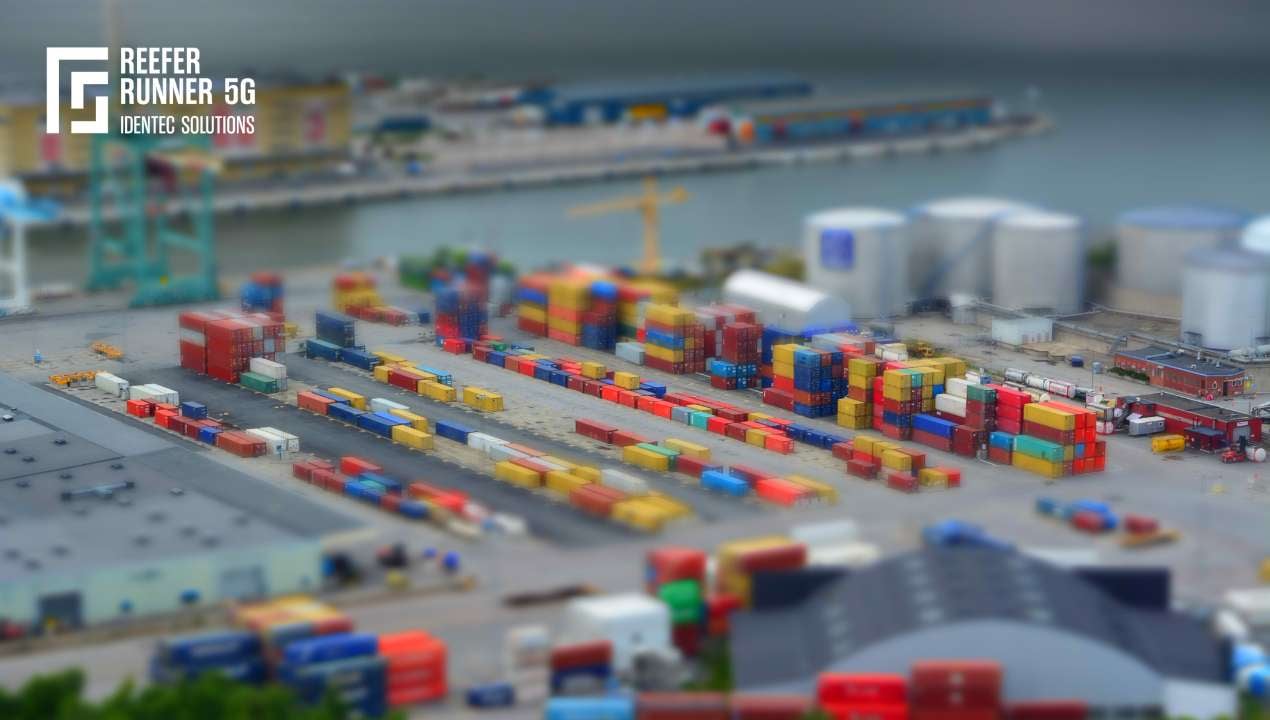
As many fires have taught us, they usually need three things to break out: flammable material, oxygen and heat. Normally. With some, it is different. For example, let's take lithium, one of the most popular materials for energy storage.
Lithium batteries don't need oxygen. Once they reach a specific temperature, they just continue to heat up, incendiary to everything that comes into contact. This thermal runaway is a chemical reaction that is almost impossible to stop.
Temperature-sensitive goods as a source of danger
Temperature-sensitive hazardous goods are any chemicals, pharmaceuticals, food products, or other materials that are prone to changing state or degrading when exposed to extreme temperatures. Transporting and storing such goods requires special precautions to protect them and the safety of personnel inside container terminal facilities. This article will explain the procedures to be used when handling temperature-sensitive hazardous goods at container terminal facilities to ensure they are safely stored and transported.
Temperature-sensitive hazardous goods can be affected by extreme temperatures, which may cause them to perish, decompose, malfunction, or corrode. Therefore, proper storage (read more about cold chain warehouse management) and transport of such materials must be strictly monitored in order to ensure their safety and the safety of personnel within the facility. Container terminal facilities must adhere to regulations regarding the cold chain storage, checking, and labelling of temperature-sensitive items in order to provide a safe working environment for personnel and maintain the integrity of the goods.
When handling temperature-sensitive items, the first step is to ensure that the facility is properly equipped with the necessary equipment to maintain the goods’ integrity. This includes temperature-controlled storage and adequate insulation to protect products from extreme temperatures. In addition, container terminals must be equipped with the appropriate monitoring equipment, such as temperature-sensitive labels, to ensure that goods are stored and transported within the specified temperature range.
Proper training is another key factor in ensuring that temperature-sensitive hazardous goods are properly managed and handled. Personnel should be trained in the proper handling and storage of temperature-sensitive items, as well as on the regulations and guidelines that must be followed when dealing with such goods. Training should also include instructions on how to identify and report temperature irregularities to ensure that the goods are handled in a safe and satisfactory manner.
Finally, container terminals must have a system in place for regularly monitoring the temperatures in which temperature-sensitive items are stored and transported. This should include regular temperature checks and inspections of storage and transport areas, and any necessary corrective actions should be taken immediately. By following these procedures, container terminal facilities can ensure that temperature-sensitive hazardous goods are safely handled, stored, and transported.
WHAT Classes of dangerous goods Exist?
The International Maritime Organization (IMO) categorizes dangerous goods into a number of classes, based on the risk they pose (2). These classes include:
- Class 1 - Explosives
- Class 2 - Gases
- Class 3 - Flammable liquids
- Class 4 - Flammable solids
- Class 5 - Oxidizing substances and organic peroxides
- Class 6 - Toxic and infectious substances
- Class 7 - Radioactive materials
- Class 8 - Corrosives
- Class 9 - Miscellaneous dangerous goods
Temperature-sensitive dangerous goods, such as explosives, flammable liquids, or organic peroxides, are classified as Class 1, 2, 4 and 5. In container terminals, special attention must be given to these types of dangerous goods as they are particularly vulnerable to temperature changes. Fluctuations in temperature can affect their stability, their volatility and the potential of them to cause an explosion, fire or release toxic fumes.
When transporting temperature-sensitive hazardous goods, it is essential that safety measures are in place to protect them from temperature extremes. Here are some of the measures that can be taken in container terminals:
- Optimal storage conditions: To ensure that temperature-sensitive hazardous goods are not exposed to extreme temperatures, consideration should be given to storing them in areas that are well-ventilated and away from direct sunlight or any sources of heat or cold.
- Temperature monitoring: Installing temperature monitoring systems in areas where temperature-sensitive hazardous goods are stored can provide real-time data on temperature conditions and alert personnel to any changes.
- Insulated containers: Insulated containers (reefers) can help protect goods from extreme temperatures.
- Heat-dissipating materials: Adding heat-dissipating materials, such as gel packs, to the containers can help to reduce the risk of explosions and fires due to temperature fluctuations.
By taking these measures, container terminals can ensure that temperature-sensitive hazardous goods are kept safe and secure (see also: Cold chain components).

How to Store dangerous goods safely?
- It is essential to designate a specific storage area for hazardous materials and clearly label it as a hazard zone to prevent unauthorized access.
- Ensure the storage zone is properly ventilated, dry, and kept at an appropriate temperature, while also adhering to the specific requirements for each material being stored.
- It is crucial to ensure that all containers are securely sealed, weather-proof, and resistant to corrosion to prevent any potential release of hazardous chemicals.
- Compatibility with the storage space is also important to consider, as circular containers may not fit on square pallets. These measures are necessary to maintain the safety and integrity of the hazardous goods being stored and transported.
- Label all containers with weather-resistant labels, perform weekly inspections of all storage and transportation areas, and use safety barriers like warning and caution signs in and around hazardous material zones.
- Routine assessments can help identify small issues before they turn into major liabilities.
Safe storage of hazardous goods - Temperature
To avoid this risk, container terminal facilities must take steps to ensure that temperature-sensitive hazardous goods are adequately protected throughout their transit. This can include regular monitoring of temperature levels within the facility, an appropriate storage plan for temperature-sensitive goods, and a reliable system for monitoring and recording temperature levels.
Monitoring of temperature
The first step to protecting temperature-sensitive hazardous goods is to regularly monitor the temperature inside the containers and the terminal facility. This can be done using a variety of tools and techniques, such as infrared imaging, temperature loggers, and probes. These tools can help identify both the current temperature level and any areas where extreme temperatures are occurring, allowing the facility to take corrective measures quickly and effectively.
Storage Plan
In addition to regular temperature monitoring, container terminals must have an appropriate storage plan for temperature-sensitive hazardous goods. This plan should include factors such as proximity to temperature-sensitive areas, the use of competent workers to handle the goods, and ensuring that the best possible environment is provided for storage.
Monitoring and Recording
Finally, container terminals must have a reliable system for monitoring and recording temperature levels. This should include a complete record of the temperature levels throughout the facility and any corrective measures taken when temperatures exceed the predetermined levels. This system should be regularly monitored and updated to ensure that any temperature changes can be identified and responded to quickly.
Controlling the temperature of containers
Temperature control is paramount for protecting temperature-sensitive hazardous goods in any container terminal facility. It is critical to maintain the correct temperature within the containers, as well as the surrounding environment. To achieve this, monitor and adjust cargo temperatures inside the containers throughout the delivery route and storage in the terminal facility. Temperature control is crucial for particularly temperature-sensitive goods, such as food, pharmaceuticals, and chemicals.
Many container terminals now employ temperature-controlled and monitored container technology, such as air-conditioned containers, temperature-monitoring systems, and temperature-controlled storage rooms. There are also sophisticated analytic tools, such as data loggers, to measure and monitor the container's internal temperature. In addition, automated sensors, alarms, and notifications can be set up to alert operators in case of temperature fluctuations. Finally, operators must be thoroughly trained to recognize and respond to temperature changes within the container.
Using reefers for controlling environment
Reefer containers are a must-have for container terminal facilities to protect temperature-sensitive hazardous goods from environmental factors. They are refrigerated cargo containers equipped with temperature control technology and optimized for the carriage of temperature-sensitive goods.
Reefers containers can maintain a wide range of temperature settings to meet the needs of temperature-sensitive hazardous goods. For example, the temperature range can be set to very low temperatures, such as -25°C, while in some cases, they can also go up to ambient room temperature. This allows the storage of products such as pharmaceuticals, vaccines, foodstuffs, and other temperature-sensitive hazardous goods that are sensitive to both low and high temperatures.
Reefer containers also have a thermal insulation system which helps to maintain the optimum temperature of the stored goods. This insulation system also helps in reducing heat transfer between the interior and the exterior of the container, preventing the escape of cool air and the entrance of warm air.
Moreover, reefer containers also have humidifiers and dehumidifiers that help in controlling the humidity levels inside the container, which is also critical for temperature-sensitive hazardous goods (see: Cold chain requirements). They are also equipped with air purifiers, which clean and filter the air inside the container, ensuring the environment is suitable for storing goods.
In addition to all this, reefer containers also come with additional features, such as alarm systems, which alert the operators in case of any anomaly or deviation from the predetermined temperature set points. This helps to ensure that the goods remain in optimal condition while they are stored, and operators have ample time to take corrective actions.
Reefer Runner as a solution to monitor container temperature
Reefer Runner is an innovative solution to monitor temperature-sensitive hazardous goods in container terminal facilities. The system continuously monitors and records reefer temperatures, alerting personnel when temperatures exceed user-defined thresholds. The system is easy to install and use and provides consistent, real-time data monitoring of temperature-sensitive goods.
Benefits of Reefer Runner include:
- Real-time temperature monitoring: Reefer Runner allows personnel to monitor temperatures remotely in real time. This allows users to make informed decisions quickly, mitigating the risks associated with temperature-sensitive goods.
- Easy to install and use: Reefer Runner is designed to be simple to install and use. It connects with the reefer directly and, if necessary, connects to the existing terminal infrastructure, providing seamless integration.
- Automated alert system: Reefer Runner has an automated alert system which notifies personnel if temperatures exceed user-defined thresholds. This helps to react earlier to malfunctioning units and the risks of heating up stored goods.
- Accurate records: Reefer Runner is equipped with reefer data recording. It provides the entire history of temperature, humidity levels, energy usage, and more in one click. In case of damage, it will help to examine the root cause as well as to fight off false claims.
Overall, Reefer Runner is an effective solution for monitoring temperature-sensitive hazardous goods in container terminal facilities. The system is easy to install and use, and provides accurate, real-time data monitoring to ensure the safety and quality of the goods.
Reefer Runner 5G: Fast and Scalable solution for small terminals and depots
Until today, reefer monitoring has been done either manually or with the help of automated systems in big container terminals. Some containers have built-in modems yet only deliver a small subset of monitoring data once per 24 hours. For you as a manager of a forwarding company, these technical solutions are just not good enough (learn more about cold chain shipping).
What you need is complete reefer monitoring everywhere and at any time. Successful reefer freight management is all about visibility and real-time alarms to avoid mishaps that cost money and reduce efficiency.
Reefer Runner is a wireless solution that connects to the data port of every reefer via the latest 5G mobile phone standard and makes your data available as a cloud service. Because of no infrastructure costs, it is perfect for smaller depots with the need of a fast deployment and flexible usage.
If you want to learn more about our Reefer Runner 5G system, contact us below or check out our RR5G webpage.
Dive deeper into one of our core topics: Cold Chain Monitoring
Glossary
Organic peroxides are organic compounds containing the peroxide functional group (-O-O-). They are highly reactive due to the weak oxygen-oxygen bond, making them useful as initiators in polymerization and as oxidizing agents. However, their instability poses safety risks, such as explosive decomposition under heat, friction, or light. Common examples include benzoyl peroxide and acetone peroxide. Proper handling and storage are critical.
Sources:
(1) Hamidou, Mansoriya & Fournier, Dominique & Sanlaville, Eric & Serin, Frédéric. (2012). Container Safety Storage on a Port Terminal.
(2) https://www.imo.org/en/OurWork/Safety/Pages/DangerousGoods-default.aspx
(3) G. A. Olah, et al. Organic Peroxides in Chemistry of Energetic Materials, Springer, 1991.
Note: This article was updated on the 22nd of January 2025

Author
Mark Buzinkay, Head of Marketing
Mark Buzinkay holds a PhD in Virtual Anthropology, a Master in Business Administration (Telecommunications Mgmt), a Master of Science in Information Management and a Master of Arts in History, Sociology and Philosophy. Mark spent most of his professional career developing and creating business ideas - from a marketing, organisational and process point of view. He is fascinated by the digital transformation of industries, especially manufacturing and logistics. Mark writes mainly about Industry 4.0, maritime logistics, process and change management, innovations onshore and offshore, and the digital transformation in general.
Related Articles
Related Product


